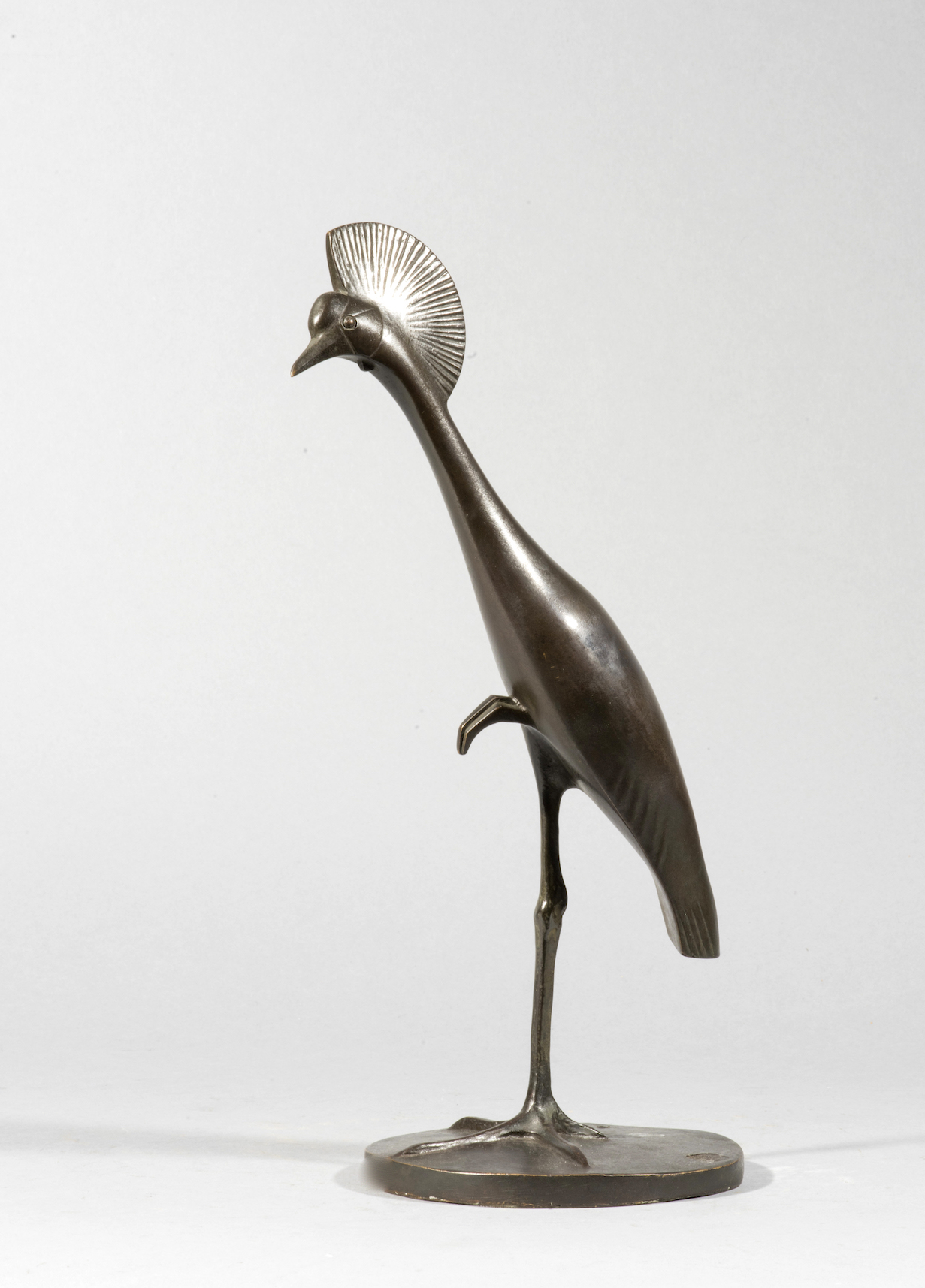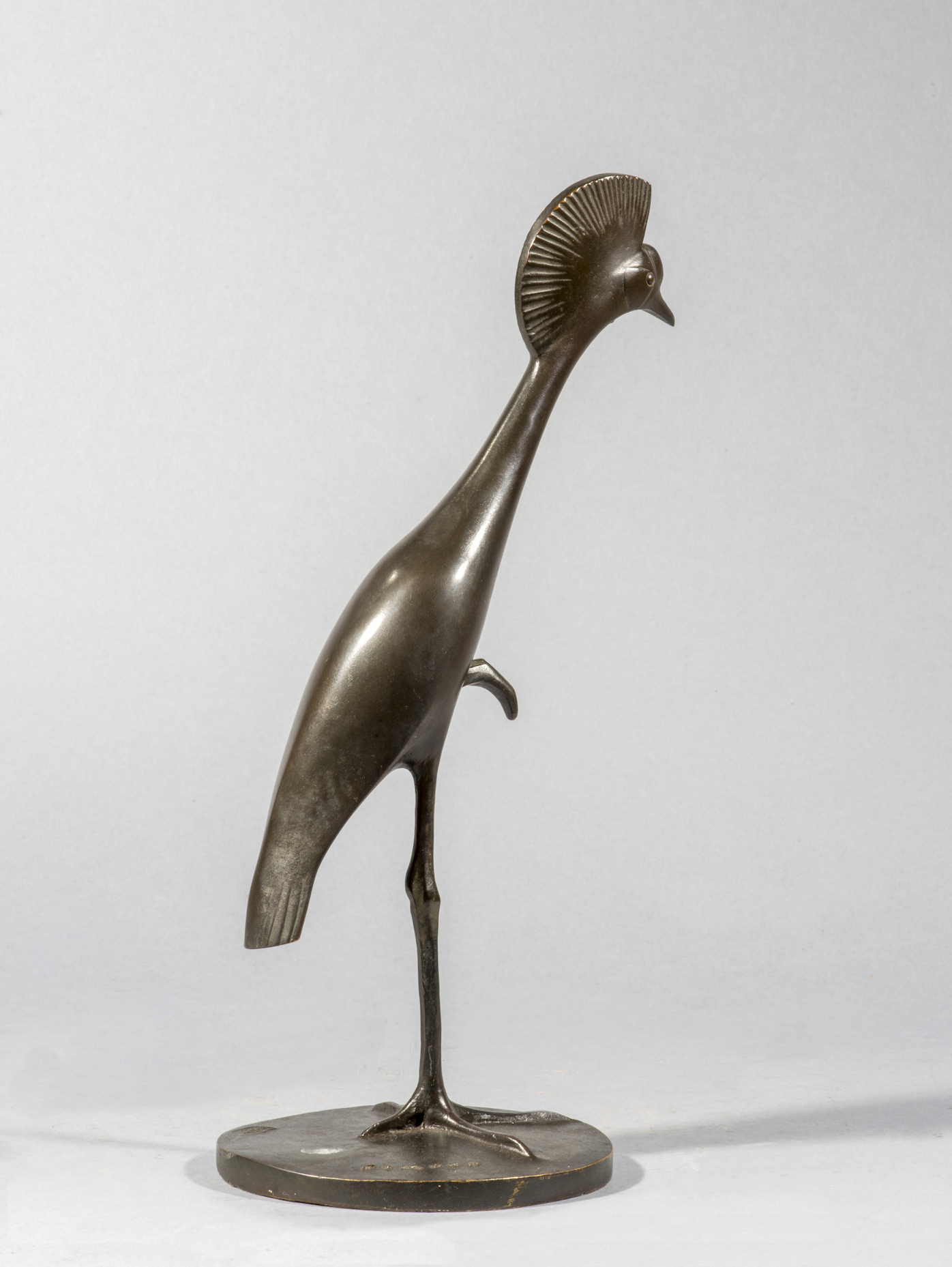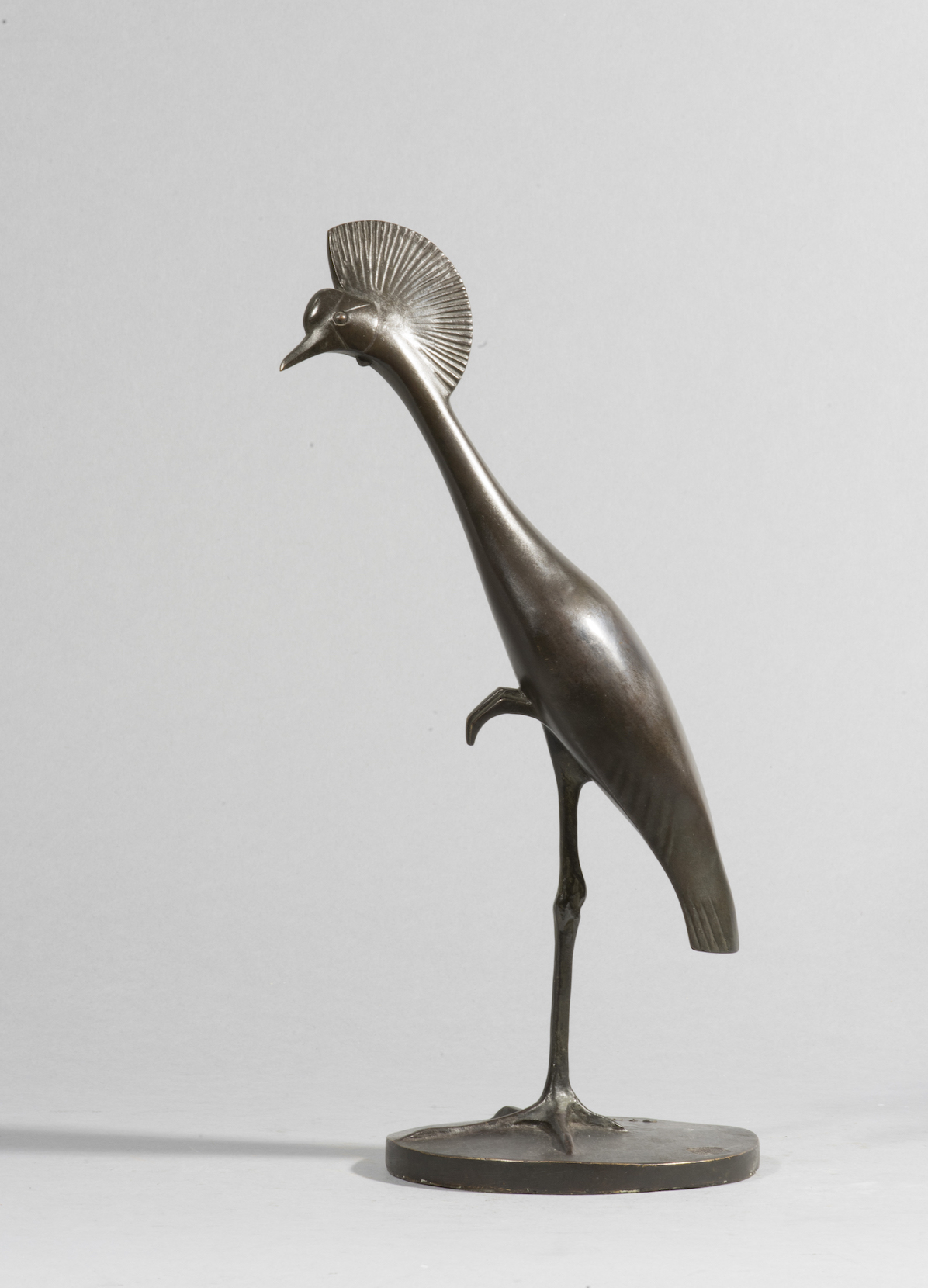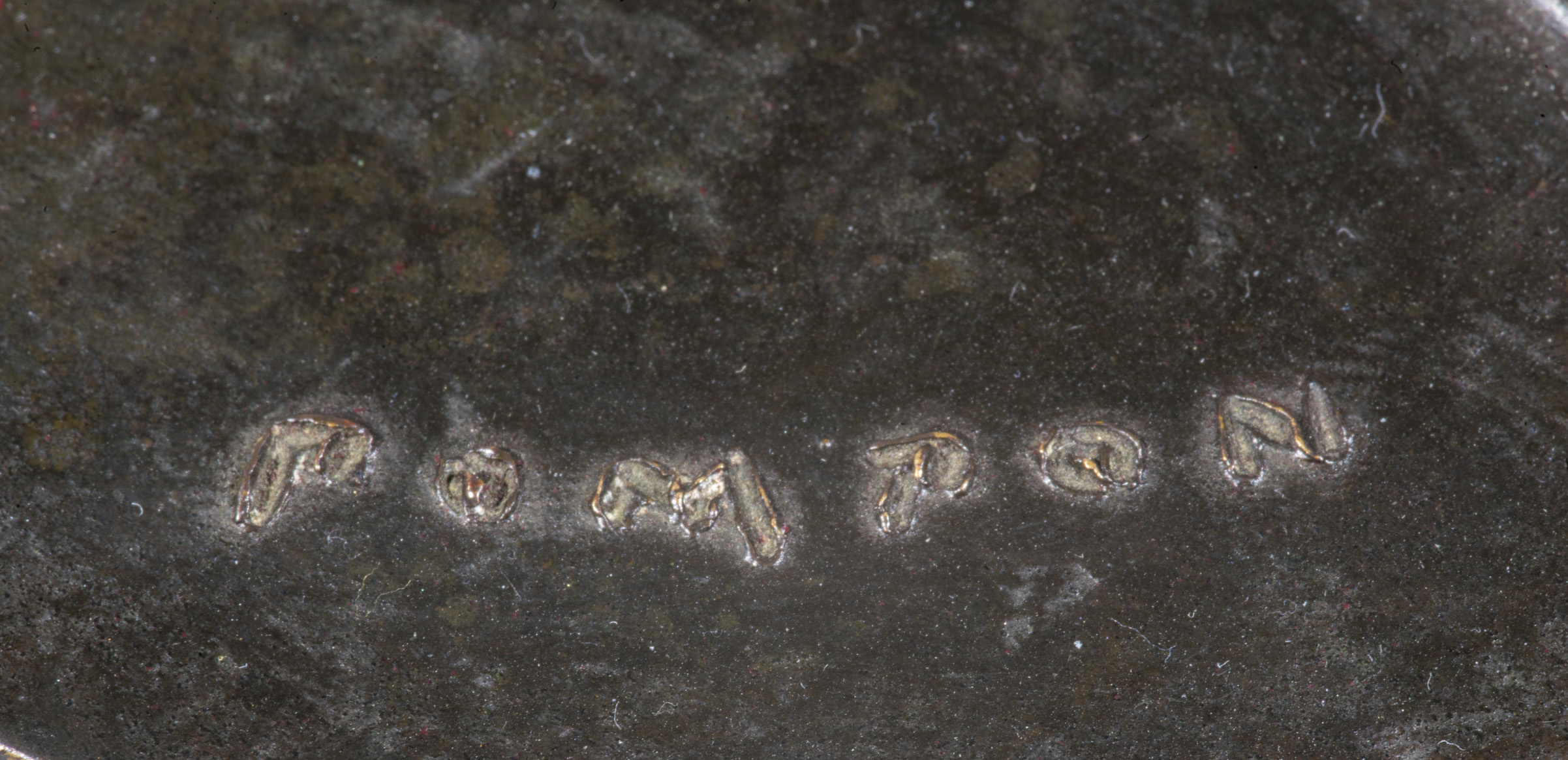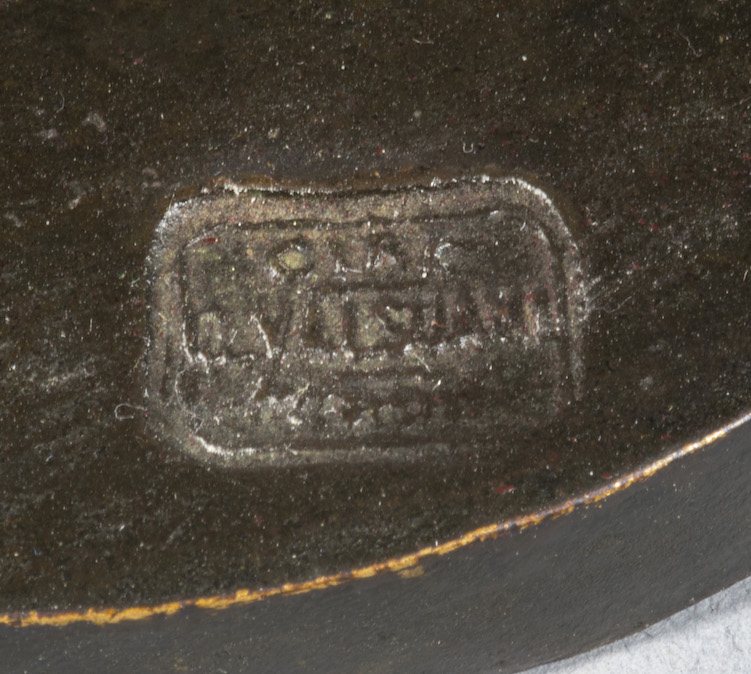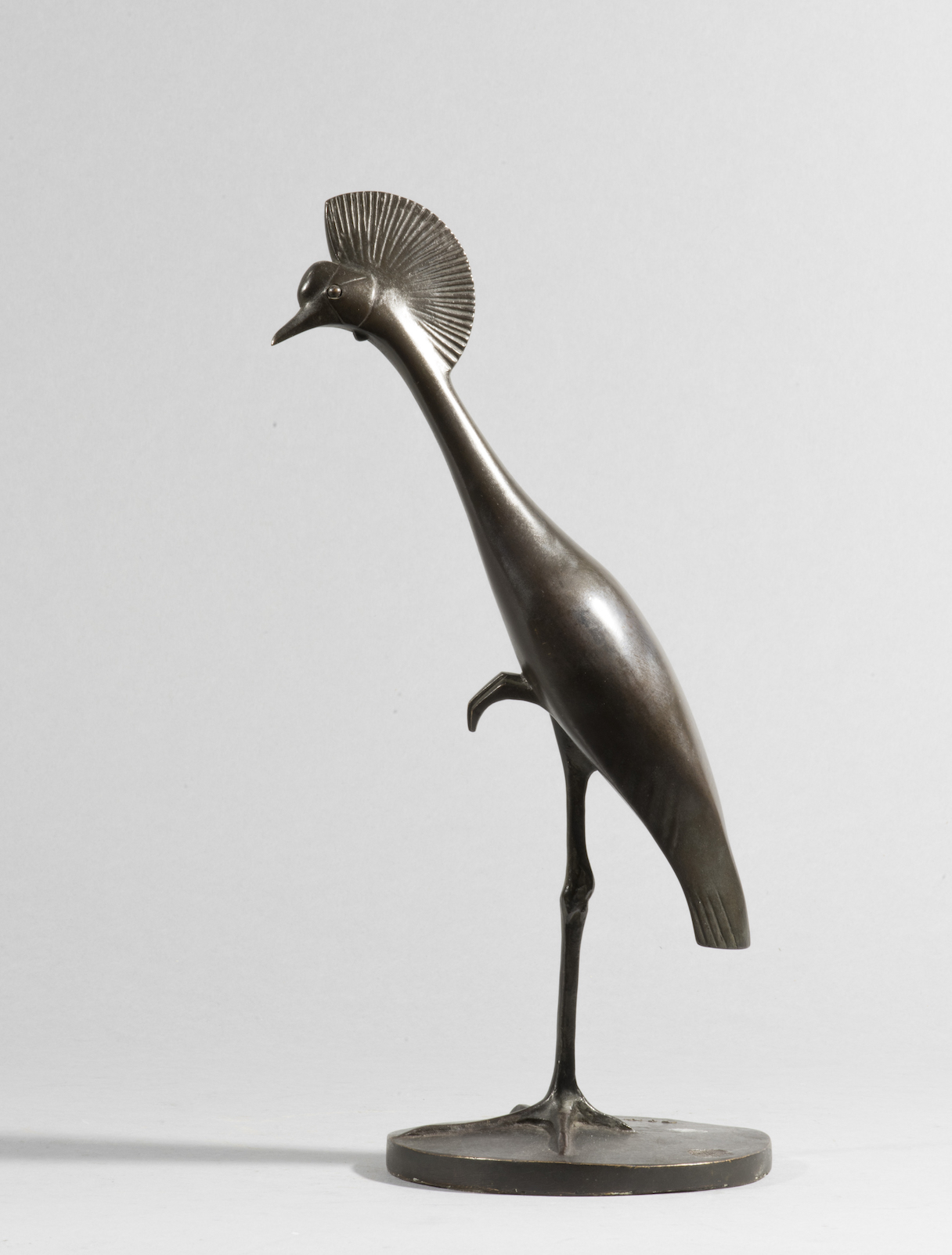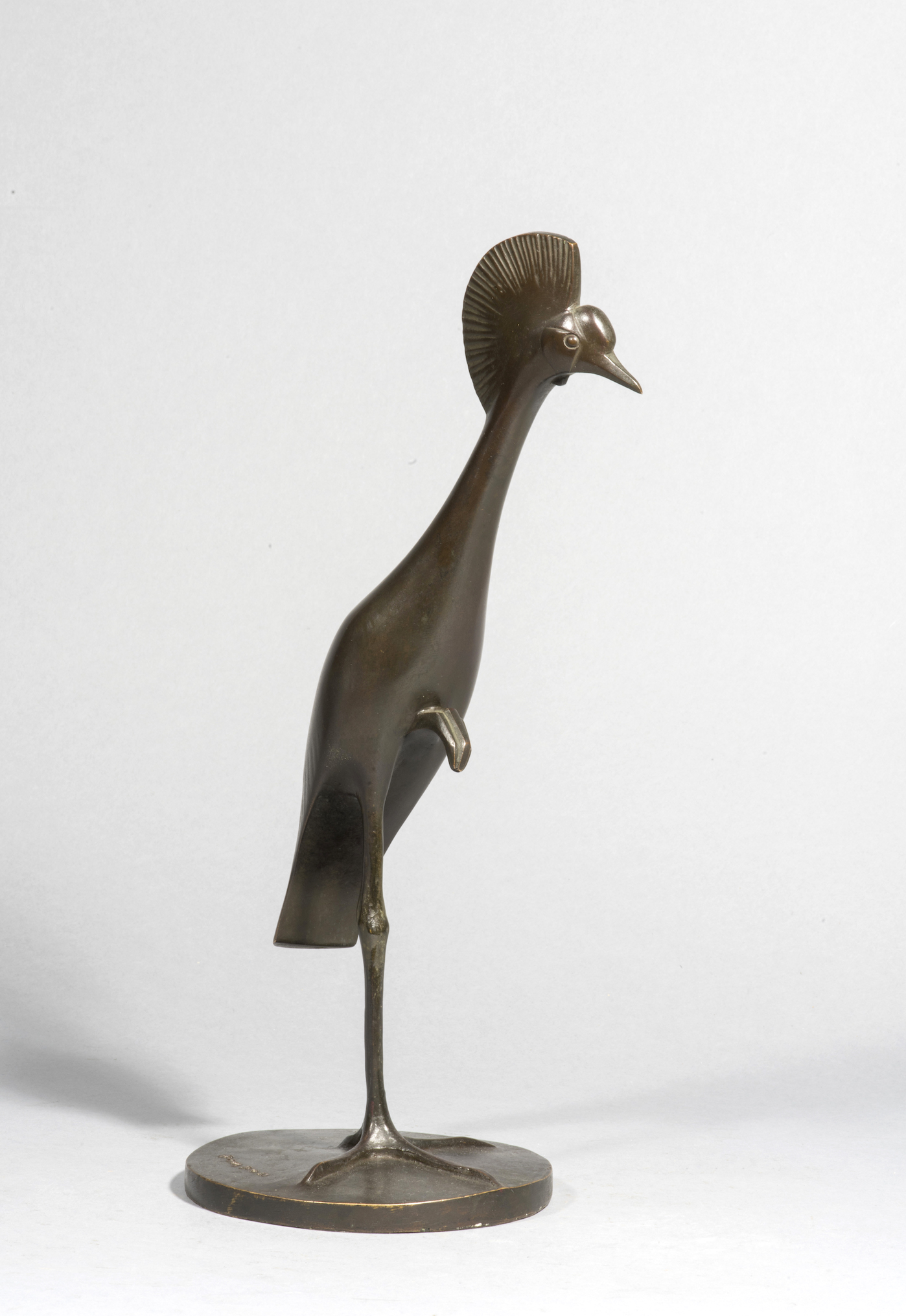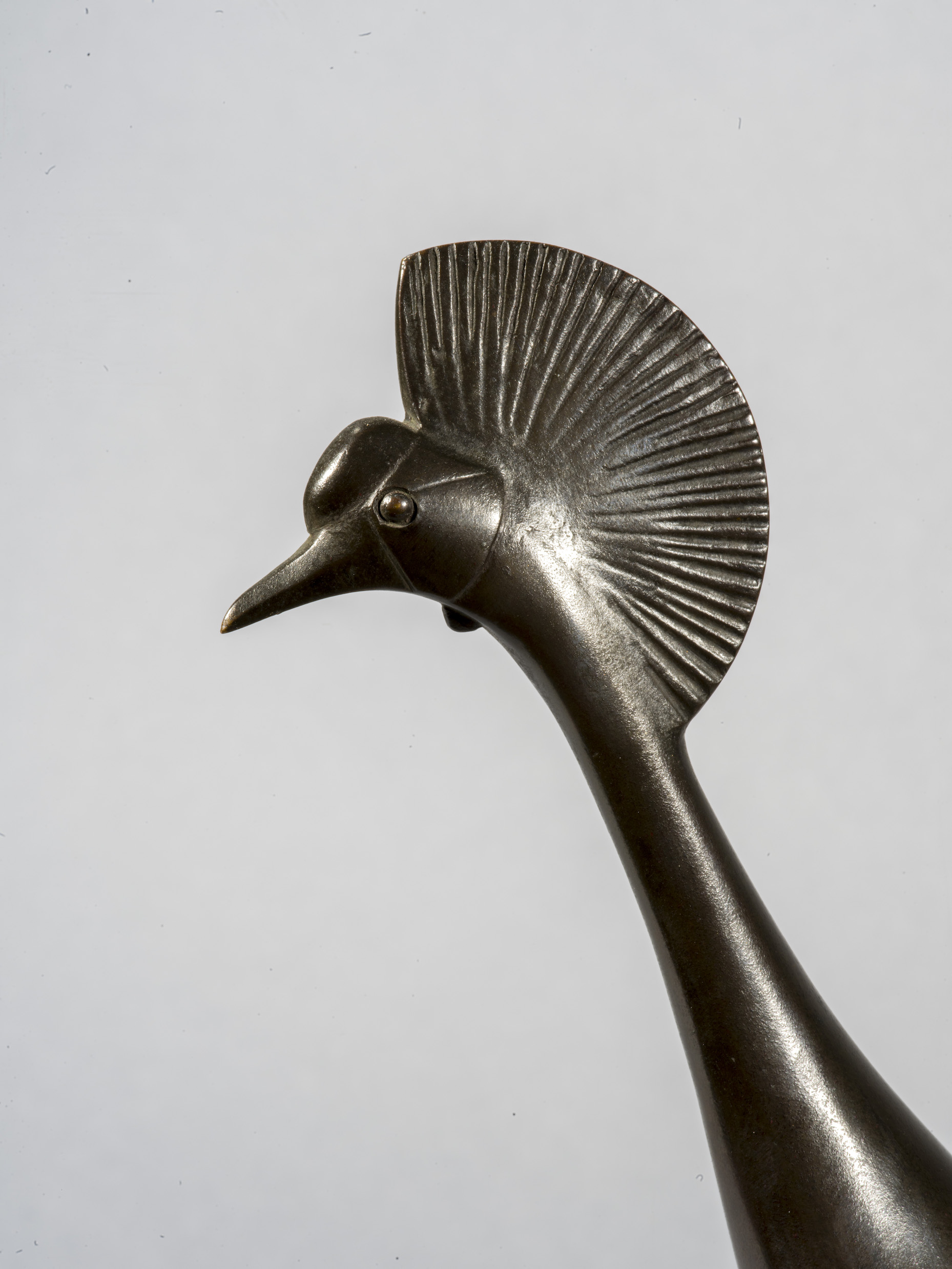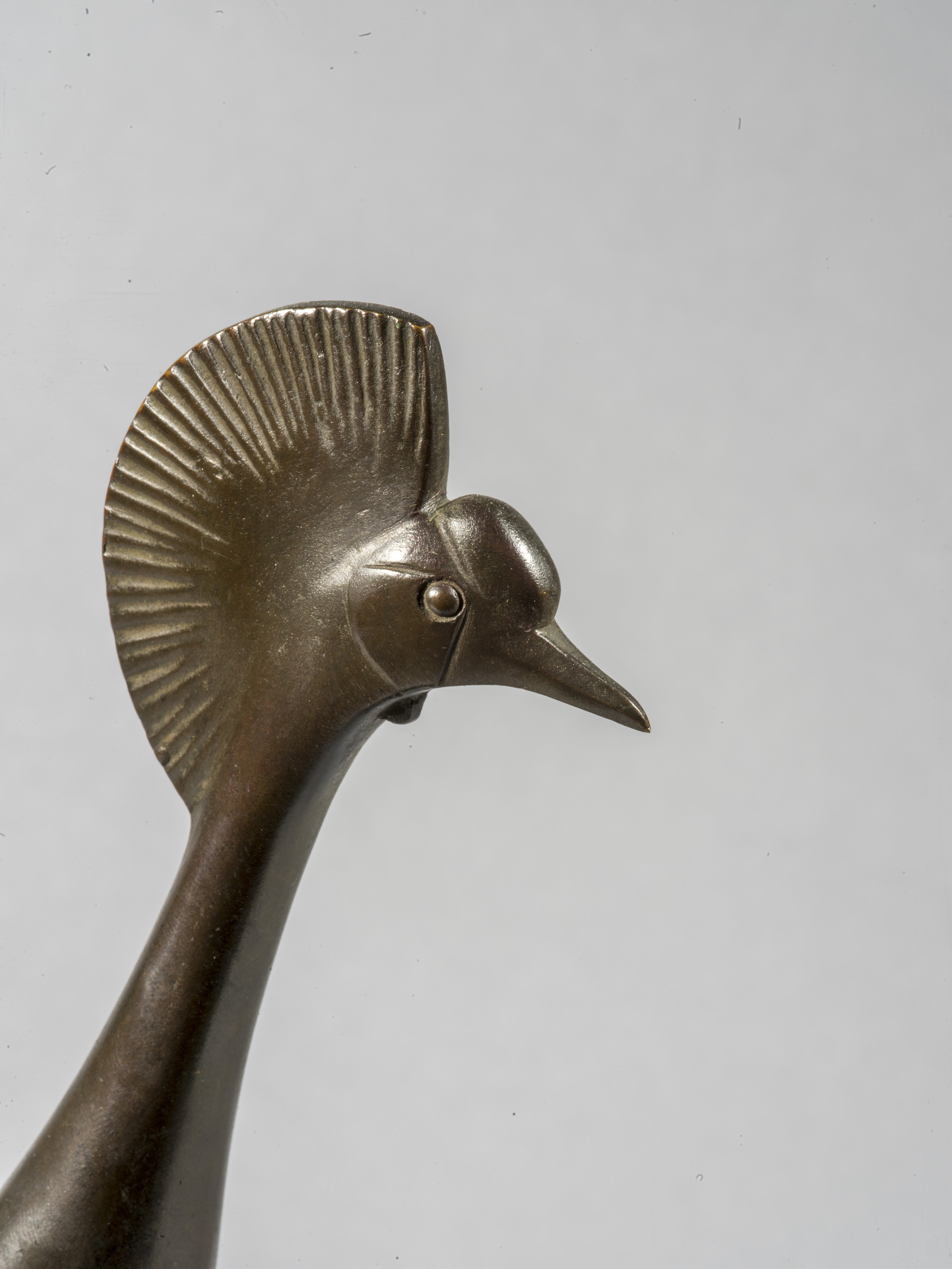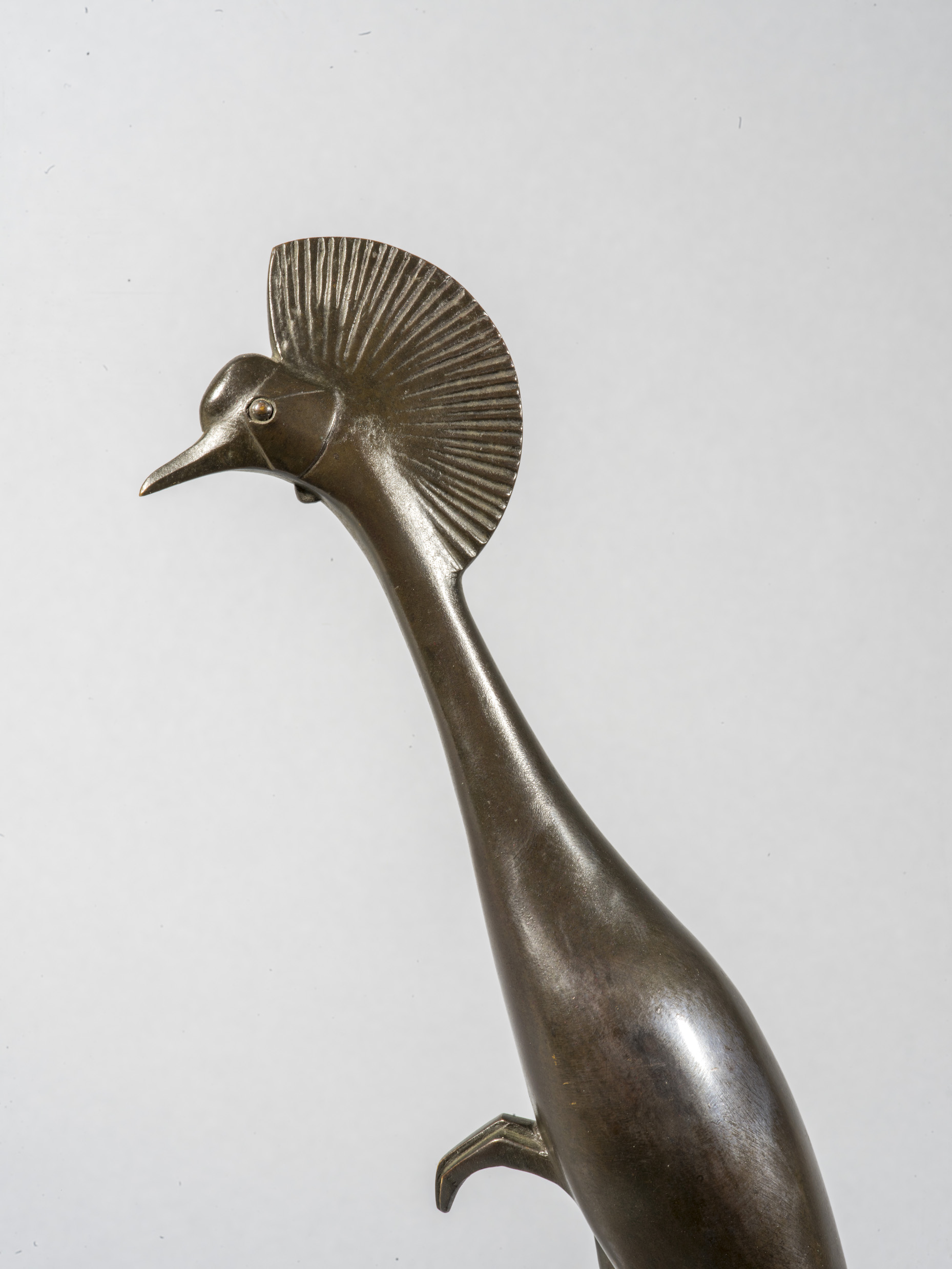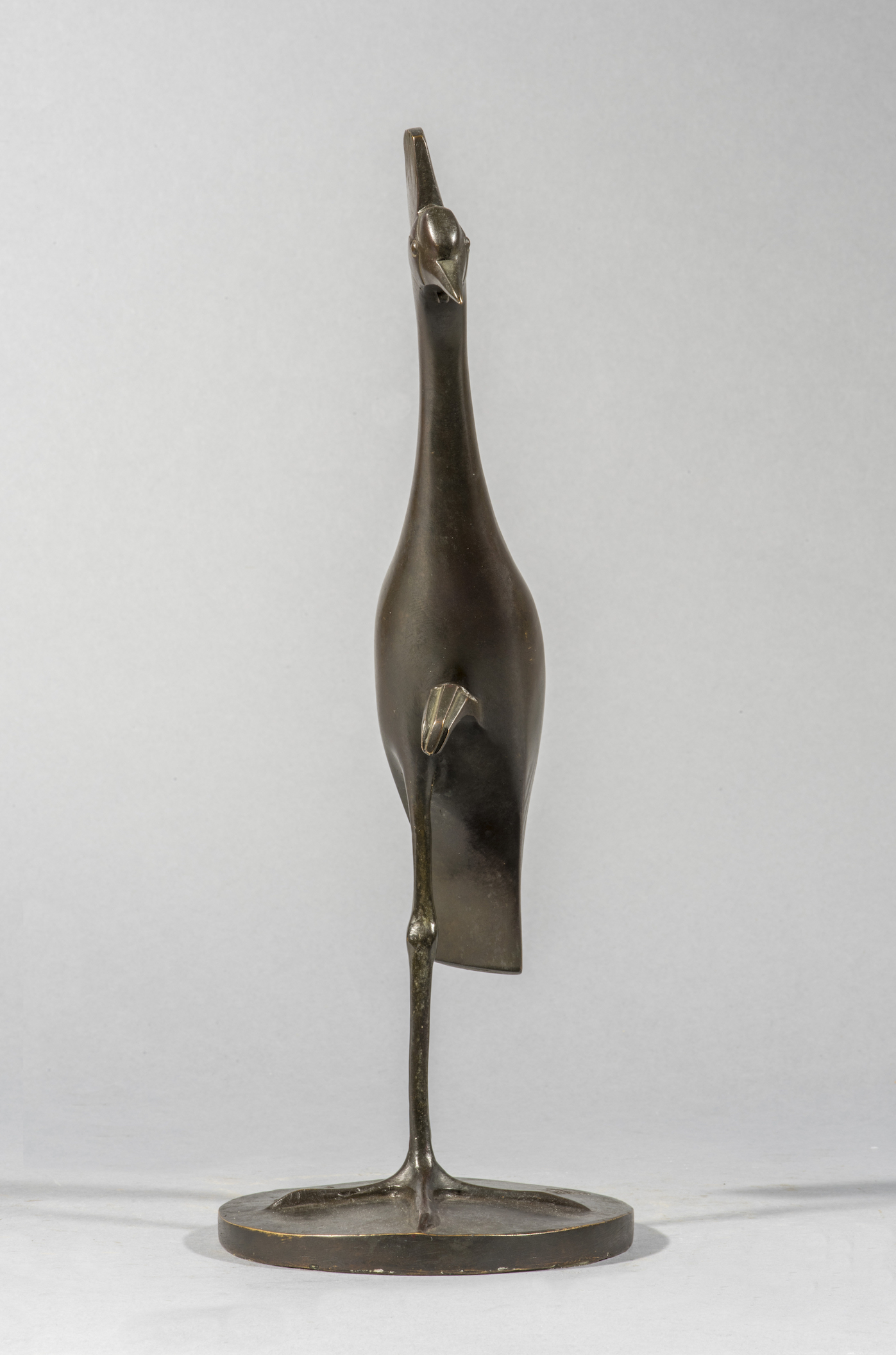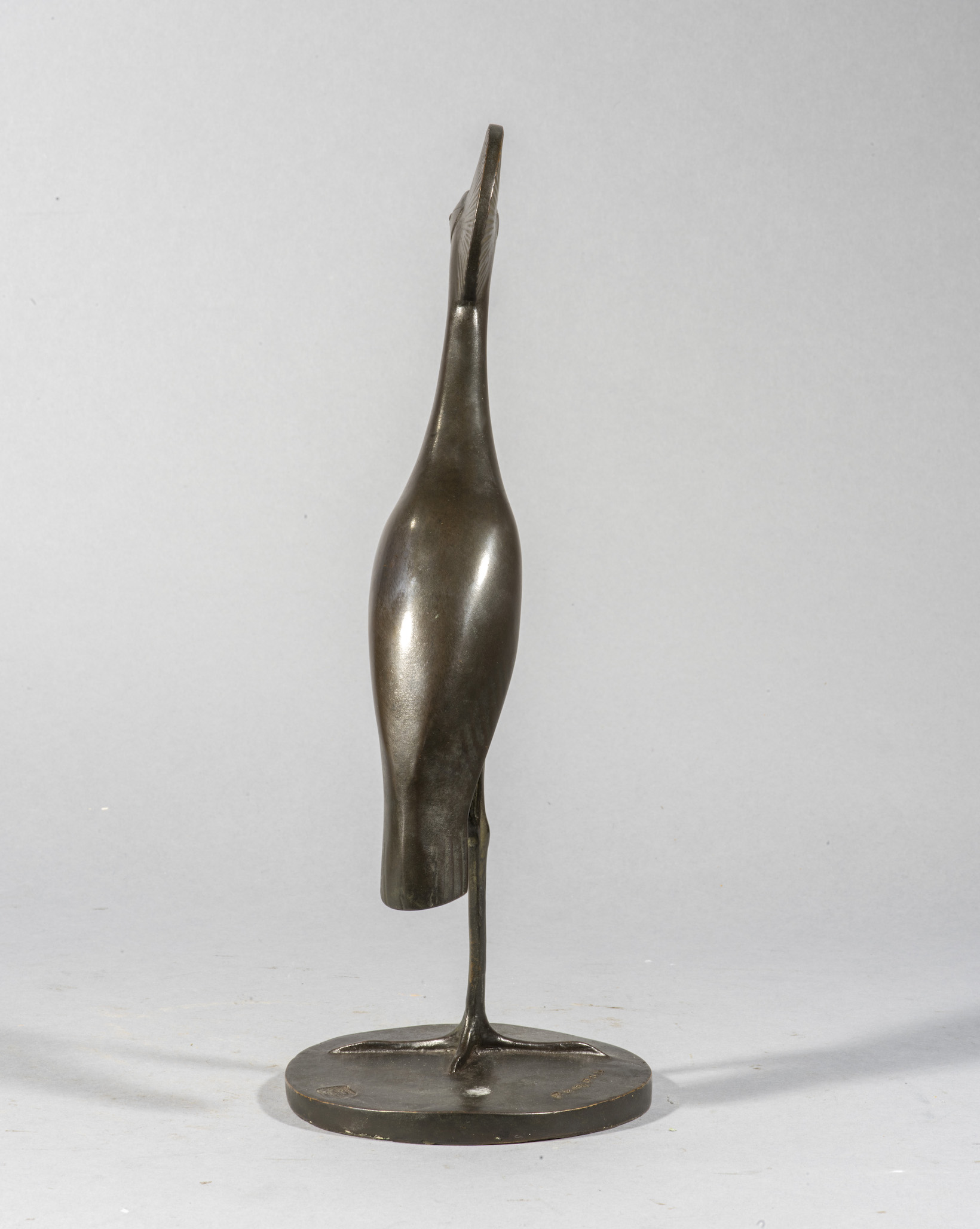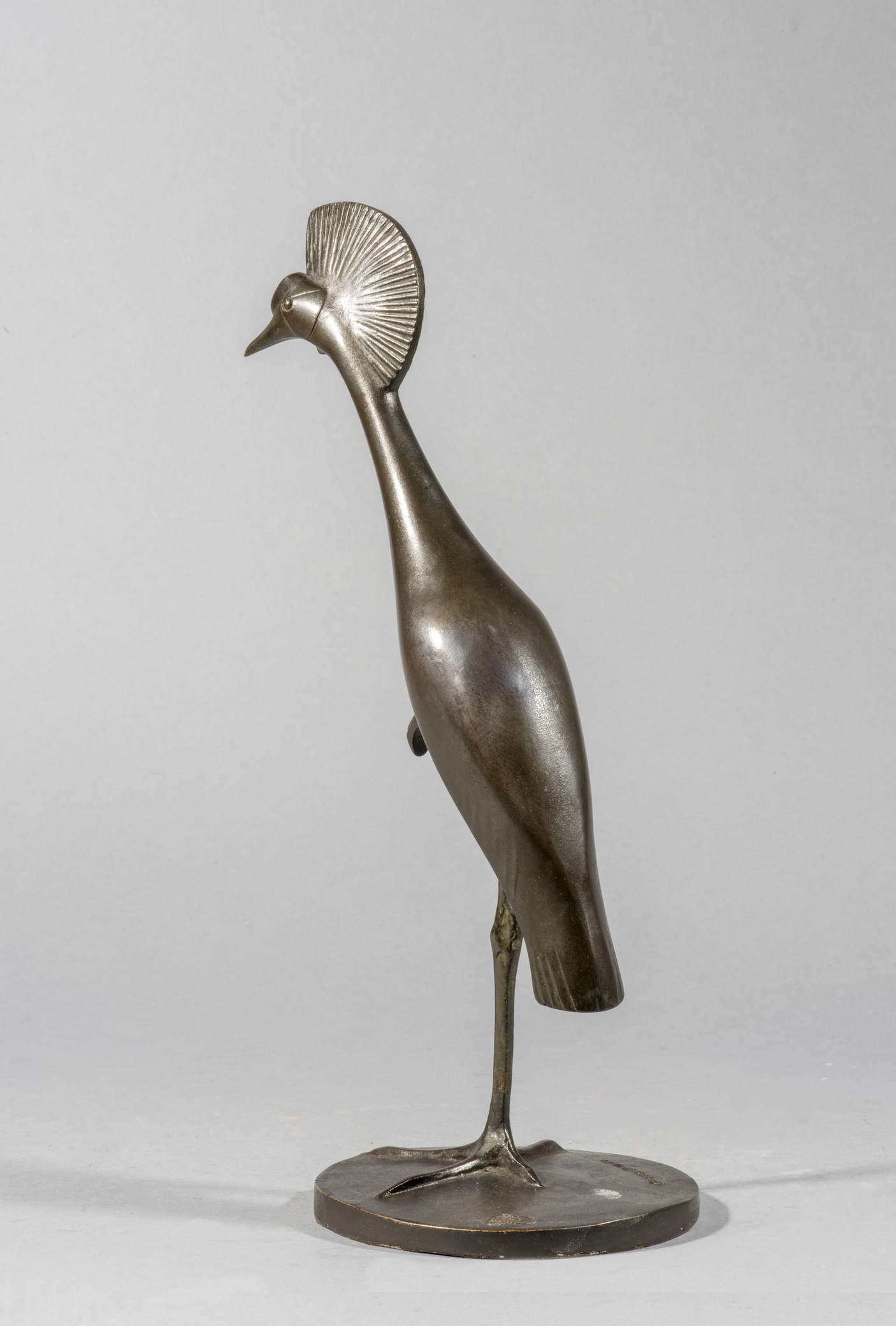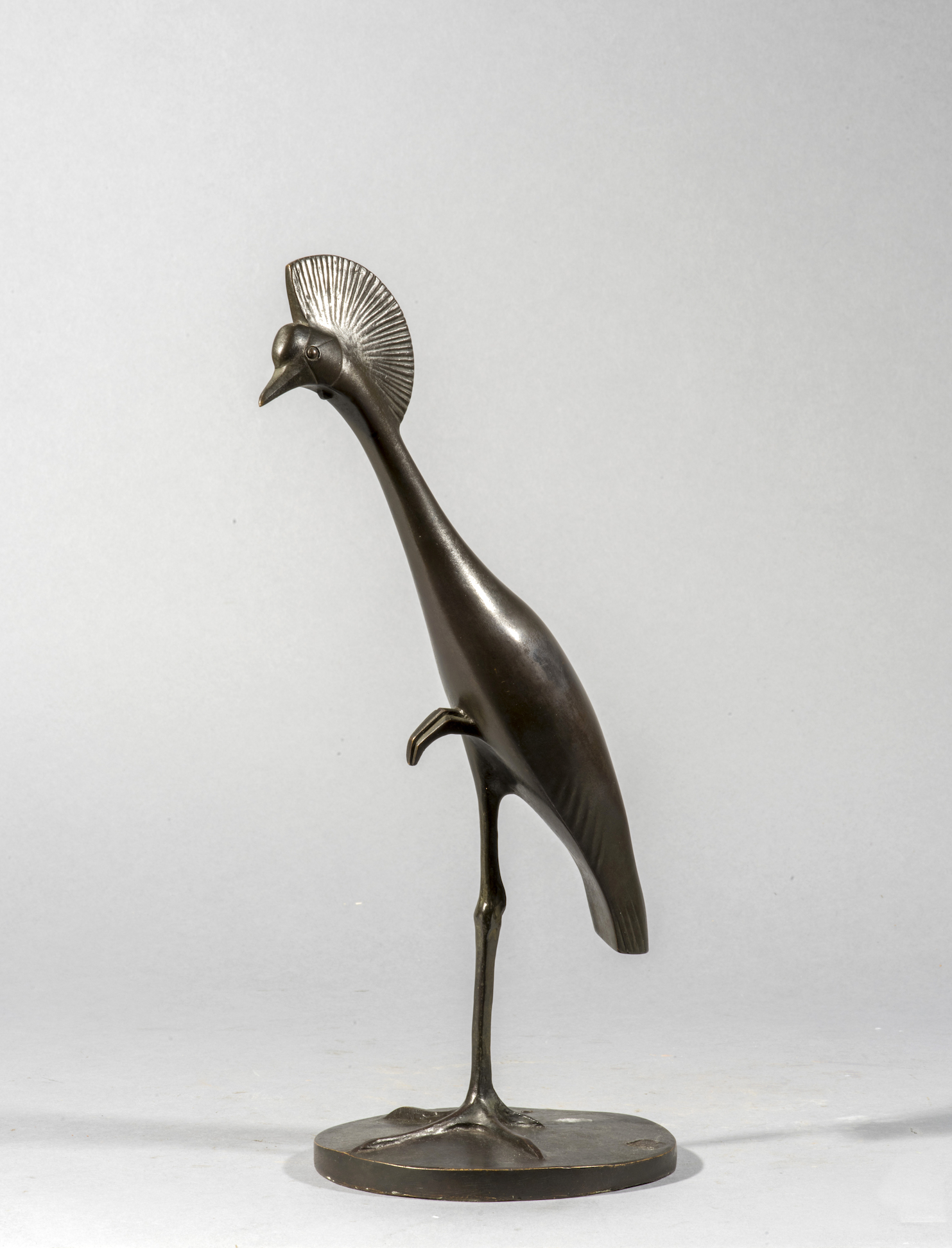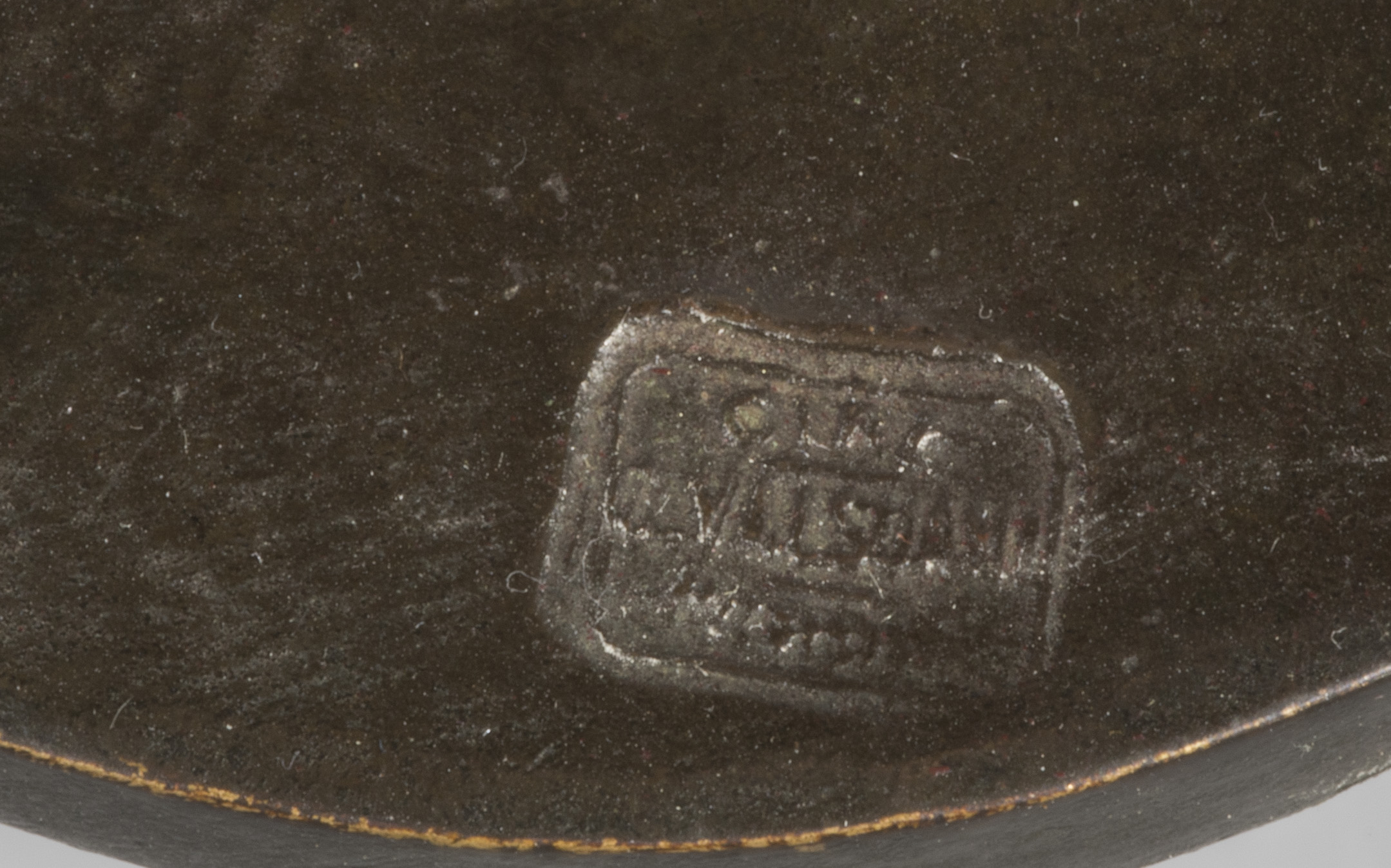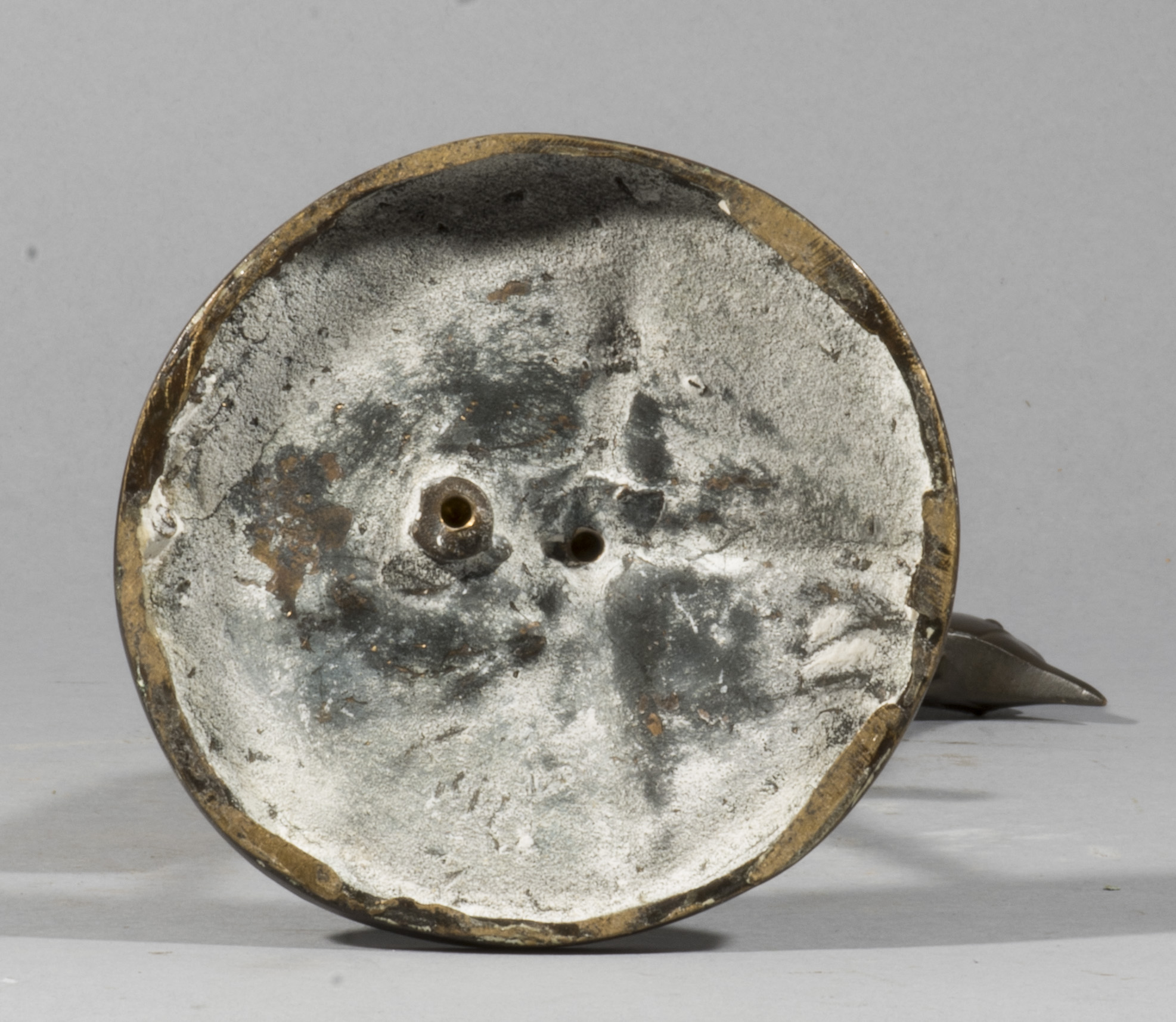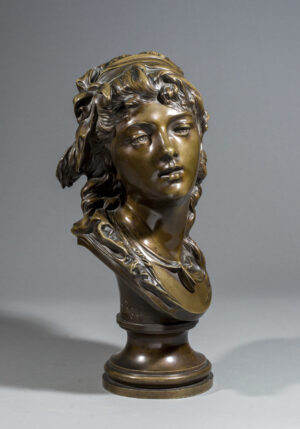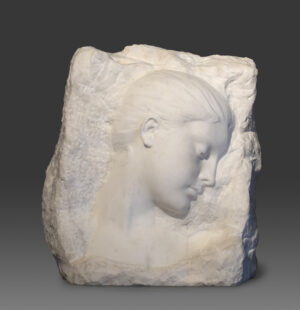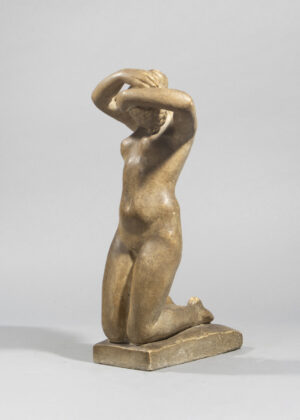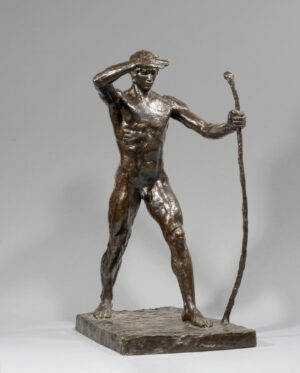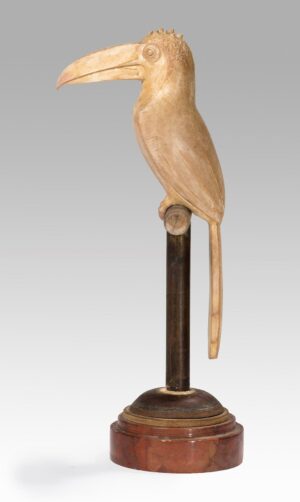Description
In François Pompon’s bestiary, birds occupy an important place, and among them the crane, in particular the crowned crane. With its slender silhouette, the majesty and elegance of its poise, enhanced by the plumage crowning its head, this wading bird seduced him. He depicted it in several versions from 1925 to 1927, walking or at rest, its crest smooth or ridged, sometimes also truncated. Our sculpture is the 1926 model, Crowned Crane at Rest with Striated Crown. Balanced on one leg, its body leaning slightly forward, its head barely turned to the left, the bird stares out at its surroundings with its round eye. The wader’s silhouette is reduced to the strength of its outline alone, while its distinctive features are highlighted. At the junction of neck and beak, we even find the small bulge characteristic of the species, which differentiates it from its relative, the Royal Crane. Both the position chosen and the simplification of form reflect Pompon’s genius for capturing the very essence of the bird. The work also reflects a sensitivity to the Japanese aesthetic that marked European art at the turn of the century, as well as an attraction to the linear and hieratic style of Egyptian art and its bestiary.
In addition to his research into line and fullness of form, Pompon attached great importance to patina and its role in the play of light on polished surfaces. Our example has a beautiful slate-black patina, whose warm, barely metallic tone allows delicate reflections of light to bring the sculpture to life. The cast is by Claude Valsuani, François Pompon’s favorite founder. In fact, unlike other founders, Claude Valsuani did not sell the bronzes he made and gave the artist complete freedom to work on his casts, such as by applying patinas or signing them in the wax before casting. This explains the exceptional quality of our example, which is also of great rarity, since very few casts of the model were made during François Pompon’s lifetime.

